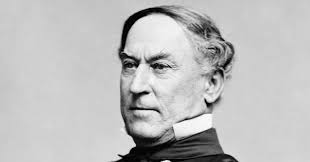May 18, 1862 – May 31, 1862
By Phil Kohn
Phil Kohn can be reached at USCW160@yahoo.com.
Having taken Baton Rouge, Louisiana, and Natchez, Mississippi, a U.S. Navy flotilla under Capt. David Farragut on May 18, 1862, reaches the stronghold of Vicksburg, Mississippi, which commands a strategic position on the Mississippi River. However, Confederate Brig. Gen. Martin L. Smith refuses to surrender either the city or his 5,000-man garrison and the Yankee vessels return downriver.
On May 19, President Lincoln countermands Maj. Gen. David Hunter’s order freeing slaves in the Federal Department of the South. Lincoln explains that Hunter had exceeded his authority in issuing the order and that such decisions are to be made only by the chief executive. He once again appeals to the states to adopt his proposal of gradual, compensated emancipation.
The first troops of the Federal California Column enter Tucson, Confederate Territory of Arizona, on May 20. The town had been abandoned by the Confederate Arizona Rangers on May 14 as they headed eastward towards the Rio Grande. In Washington, D.C., President Lincoln signs into law the Homestead Act that will give settlers 160 acres of land in the public domain if they occupy it and improve it over five years.
On May 22, in Mississippi, Union troops under Maj. Gen. Henry Halleck skirmish outside Corinth with Confederates commanded by Gen. Pierre Beauregard.
Stonewall Jackson seizes Front Royal, Virginia, in the Shenandoah Valley on May 23. Two days later, Jackson’s 16,000 troops crush the 8,000 federals under Maj. Gen. Nathaniel Banks at Winchester, Virginia. U.S. casualties: about 2,800; Confederate: 400.
Concerned by the continued advances of Stonewall Jackson, President Lincoln on May 24 issues orders to Maj. Gen. John Frémont (in western Virginia) to move against Jackson in the Shenandoah Valley and for Brig. Gen. Irvin McDowell, at Fredericksburg, to divert some of his men to help Frémont. Because of these shifts in forces, Lincoln informs Maj. Gen. McClellan that increasing the strength of his Army of the Potomac is impossible.
On May 25, 1862, President Lincoln presses Maj. Gen. George McClellan, sending him a message to “either attack Richmond or give up the job and come to the defense of Washington.”
The next day, May 26, President Lincoln again prods McClellan: “Can you get near enough [to Richmond] to throw shells into the city?” Meanwhile, in the Shenandoah Valley, Maj. Gen. Nathaniel Banks’s force continues to back away from Stonewall Jackson’s advancing Confederates after their defeat at Winchester. In the West, Sherod Hunter’s company of Arizona Rangers arrives at Mesilla, where it joins the five companies of Col. William Steele’s battalion of 7th Texas Cavalry.
A Federal victory at Hanover Court House, Virginia, on May 27 opens the way for Brig. Gen. McDowell’s force — less the 20,000 troops he sent to the Shenandoah Valley — to move southward from Fredericksburg to join with McClellan. In the Far West, ordering Col. William Steele and half his 7th Texas Cavalry regiment along with Hunter’s Arizona Rangers company to remain behind in Arizona as a rear guard, Gen. Sibley orders his vanquished invasion force to make the 630-mile retreat from Fort Bliss to San Antonio, Texas. He forwards a report to Richmond, commenting about the condition of his troops, stating that he must abandon New Mexico, “our provisions, forage and ammunition being completely exhausted.”
Ahead of the slow-moving siege force of 110,000 federals under Maj. Gen. Henry Halleck, 66,000 Confederates under Gen. Pierre G. T. Beauregard on May 30 stealthily evacuate the rail and road hub of Corinth, Mississippi, under cover of the night and head towards Tupelo, Mississippi, 60 miles to the south. In the Shenandoah Valley, Brig. Gen. Stonewall Jackson — giving up the pursuit of Brig. Gen. Banks’s force, begins to pull his so-called “foot cavalry” back from Harper’s Ferry so as not to be trapped by the Union troops of generals Frémont or McDowell.
May 31 sees the start of a two-day battle at Seven Pines, Virginia, on the eastern outskirts of Richmond. Some 75,000 Confederates under Gen. Joseph Johnston attack the 33,000 federal troops of the 100,000-strong Army of the Potomac that McClellan had stationed south of the Chickahominy River. During the fighting, Gen. Johnston is seriously wounded. He is immediately replaced by Gen. Robert E. Lee. In the Shenandoah Valley, Jackson’s force hastily withdraws from Winchester ahead of the converging troops of Frémont and McDowell, both of whom are too late to catch the Southerners. From Cowskin Prairie, in the Cherokee Nation in Indian Territory, Col. Stand Watie leads a second raid by his Cherokee Mounted Rifles against Neosho, Missouri.








